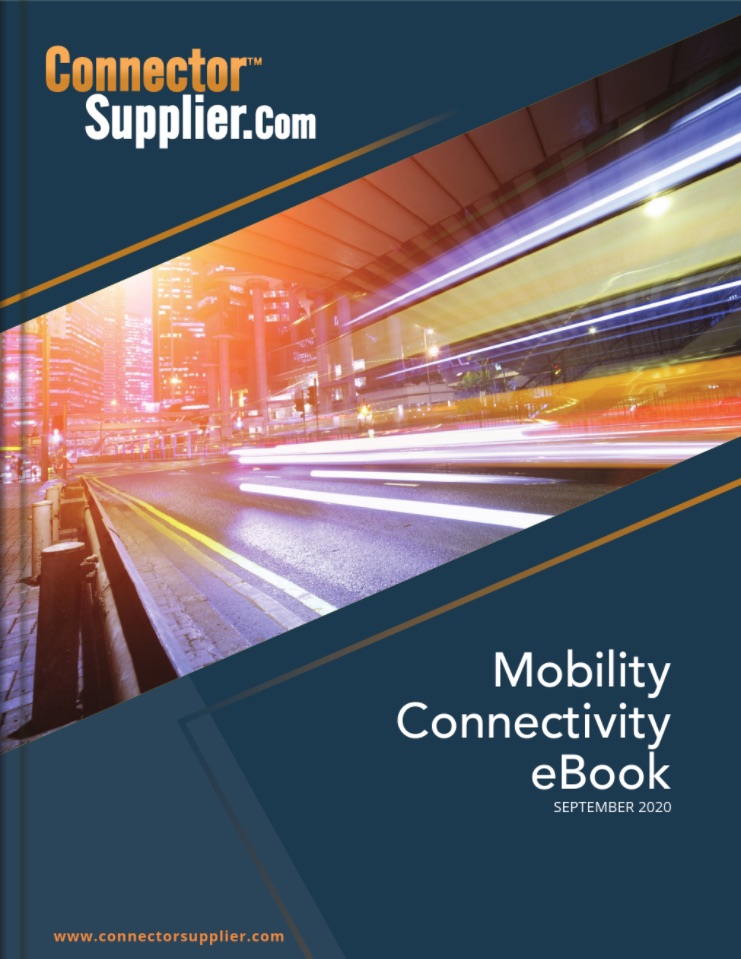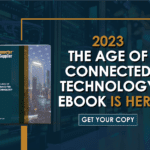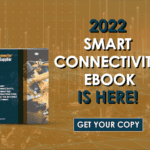2020 Mobility Connectivity eBook
In our new 2020 Mobility Connectivity eBook, more than 25 leading interconnect authorities well experienced in automotive, transportation, mil/aero, and industrial mobility share market trend and application insights, design and specification tips, best practices, and product solutions for solving today’s mobility challenges and driving the industry ever forward — faster and more efficiently, safely, precisely, effectively, enjoyably, and comfortably than ever before.
 Although modern mobility technologies still fall short of Jetsons-inspired dreams of flying cars, an ever-expanding array of mobile applications — ranging from light electric, electric, and off-highway vehicles to drones, airplanes, and spacecraft — incorporate cutting-edge vehicle-to-everything (V2X) connectivity technologies that significantly expand the functionality of nearly all modes of mobile equipment, along with e-mobility technologies that significantly improve efficiencies and environmental effects.
Although modern mobility technologies still fall short of Jetsons-inspired dreams of flying cars, an ever-expanding array of mobile applications — ranging from light electric, electric, and off-highway vehicles to drones, airplanes, and spacecraft — incorporate cutting-edge vehicle-to-everything (V2X) connectivity technologies that significantly expand the functionality of nearly all modes of mobile equipment, along with e-mobility technologies that significantly improve efficiencies and environmental effects.
Thanks to component and system technologies including connectors, cable assemblies, sensors, antennas, edge and cloud computing, radar, LIDAR, 5G, the IoT, augmented reality, and artificial intelligence, today’s on- and off-highway vehicles are increasingly able to evaluate, communicate with, and respond to the surrounding environment and leverage vast amounts of real-time data to improve safety, enhance efficiency, and make mobility more precise, effective, comfortable, enjoyable, and — in some cases — even more hands-off than ever before. The increased connectorization of mobile technologies also extends to foot soldiers equipped with advanced connectivity technologies spanning extensive sensor networks to integrated visual augmentation systems, which allow individual soldiers to serve as mobile command centers and battle stations — and even to elevators, escalators, and automation equipment, in which connected technologies monitor operating conditions and performance to enable predictive maintenance and improve safety, efficiency, and uptime.
In addition, several of today’s on- and off-highway vehicles already support some level of semiautonomous functionality, and engineers the world over are actively engaged in R&D intended to bring proven-safe, fully autonomous vehicles to our roads, construction sites, and fields. Lyft and Uber have been steadily moving toward Level 4 “High Automation” operation for years now, and Honda still plans to have Level 4 automated driving systems in its vehicles by 2025, at which point engineers will still have another 37 years to cruise past Level 5 “Full Automation” technology and finally realize the Jetsons’ far-out vision for daily transport in 2062; which — given the rapid evolution of the dynamic mobility market in recent decades and innovative, on-the-horizon technologies like personal flight devices — could be more than just a crazy kids’ dream after all.

The world’s first flying car production model, the PAL-V, at the company’s headquarters in The Netherlands. (Photo by Eslivb per CC BY-SA 4.0)
In our new 2020 Mobility Connectivity eBook, more than 25 leading interconnect authorities well experienced in developing and deploying innovative connectivity solutions for automotive, transportation, mil/aero, and industrial mobility technologies share market trend and application insights, design and specification tips, best practices, and product solutions for solving today’s mobility challenges and driving the industry ever forward — faster and more efficiently, safely, precisely, effectively, enjoyably, and comfortably than ever before. The 13 technical, tutorial articles collected in this exciting new volume address prevailing cross-market mobility trends, challenges, and design strategies including miniaturization, design flexibility, ruggedization against harsh-environment operating conditions, SWaP optimization, and standards compliance.
Our new 2020 Mobility Connectivity eBook also highlights a selection of 45 specialized electronic connectivity components designed to support the safe, reliable transmission of power and high-speed, high-signal-integrity data in harsh mobile equipment environments extending across diverse markets.
Contributors include Cinch Connectivity Solutions, ERNI, Hirose, JAE, Mouser Electronics, Omnetics Connector Corporation, PEI-Genesis, Phoenix Contact, Radiall, Rosenberger, Smiths Interconnect, SOS Engineering, TE Connectivity, TTI, Inc., WAGO, and Wearin’, part of the Fischer Connectors Group, as well as Advanced Interconnections, Greenconn, Heilind Electronics, ITT Cannon, Join Tek, Linyi New Energy Technology, Materion, METZ CONNECT, Positronic, Power & Signal Group, Schleuniger, and Stewart Connector.
We hope you enjoy our new 2020 Mobility Connectivity eBook and invite you to share your comments here, as well as to share the issue link on your social media platforms.
Like this article? Check out our recent Data Connectivity and Harsh Environment eBooks, our other special-issue eBooks, our How-to-Specify and Market Update articles, and our Automotive, Mil/Aero, and Transportation Market Pages.
- May 2021 New Connectivity Products - May 4, 2021
- Off-Highway Equipment Connectors Product Roundup - May 4, 2021
- Blind-Mating Coaxial Connectors Product Roundup - April 20, 2021







